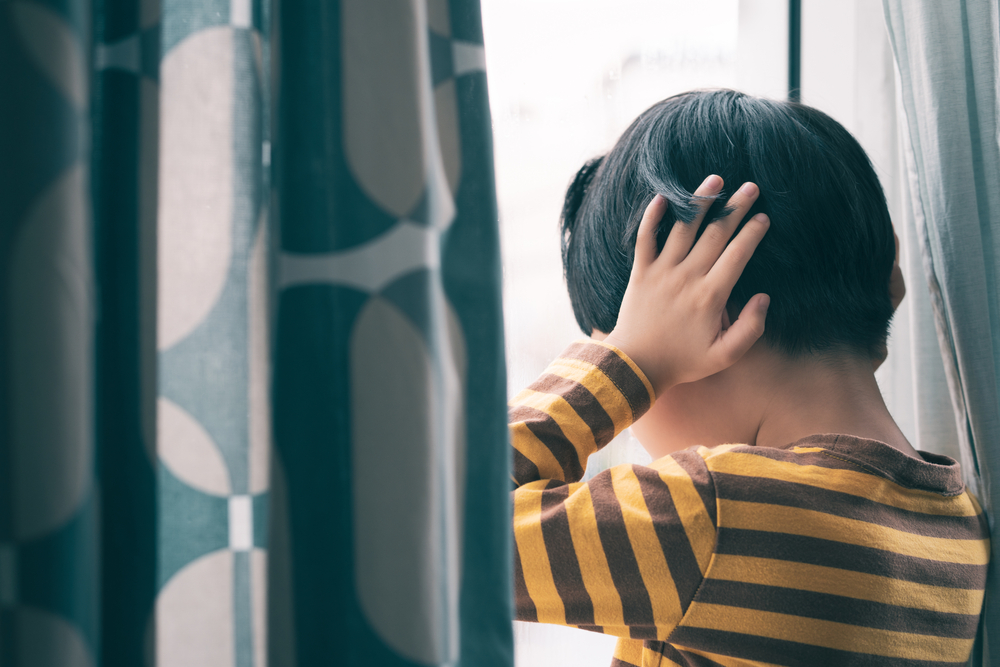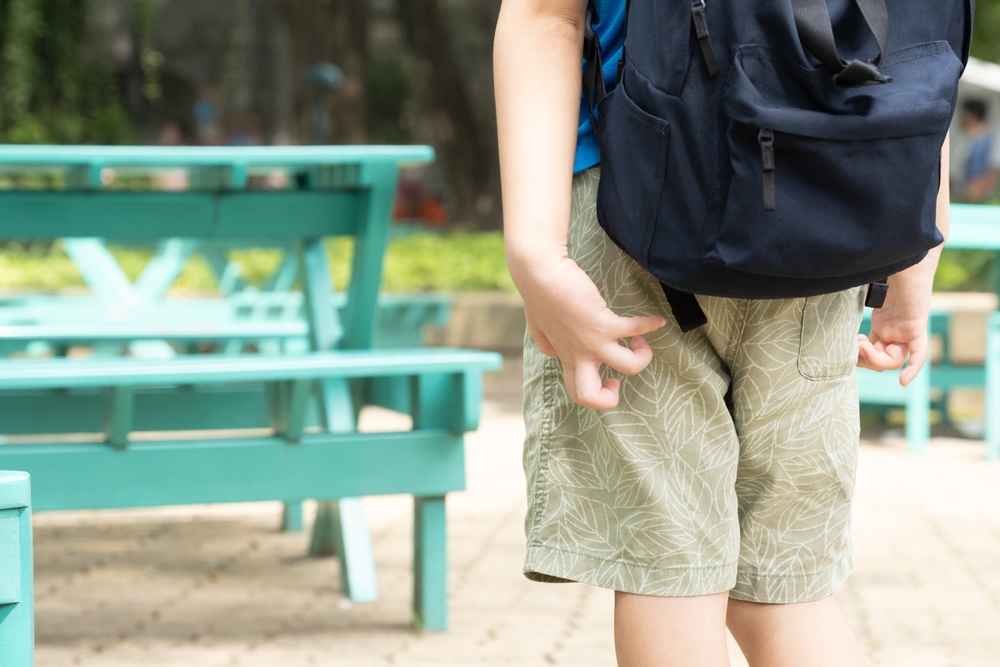As a parent, you’ve probably seen hands flapping in babies or toddlers flapping their arms. It is considered normal behavior in children this age and is mainly done when expressing strong emotions like excitement, anxiety, or frustration.
At Heartlinks, we receive many inquiries about whether hand flapping is a sign or symptom of autism and whether it should be controlled.Is hand flapping a sign of autism? The answer is it depends. Hand flapping is a perfectly natural human response. Yes, the majority of the autistic children, around 45.1%, and the most we treat, exhibit this type of behavior, but that doesn’t mean that all kids who are hand flapping past a certain age are autistic.
Read on to learn more about hand flapping and how it affects your child.
What is Hand Flapping in Children with Autism?
As a parent, you may wonder, “What does hand flapping look like?” Hand flapping is a common behavior in children with autism, regardless of whether they’re high or low-functioning. It’s characterized by repetitive body movements of one or both hands. Autistic hand flapping can also include:
- Finger Flicking
- Clapping
- Shaking
- Moving Arms
- Clenching Fists
- Clicking Fingers.
Hand Flapping and Stimming
Children with autism spectrum disorder (ASD) often flap their hands as a self-stimulatory activity called stimming. The word stimming is a shortened version of describing “self-stimulation.”
Stimming behaviors typically involve repetitive sounds or movements. Apart from hand flapping, other types of stimming might include rocking, scratching, humming, grunting, tapping their ears, or spinning. There are many reasons why autistic children hand flap and stim, including:
- Coping with sensory overload
- Self-regulation
- Maintaining focus
- Enjoyment
When Does Hand Flapping Indicate Autism?
It’s important to remember that hand flapping and other types of self-stimulatory behavior do not automatically indicate that your child has autism. All children will exhibit some sort of stimming when they are younger.
Typically, hand flapping is not a concern if it stops by the time a child is three years old. Hand flapping is common for babies and toddlers to express excitement and move around. But if any of the following accompanies this repetitive movement, it may be time to consult a medical expert:
- Continues past their third birthday.
- Increases in frequency.
- Avoids eye contact with others.
- Doesn’t respond when their name is called.
- Has flat or very limited facial expressions.
- Has difficulty understanding and respecting the personal boundaries of others.
Hand flapping may also be linked to a sensory processing disorder (SPD), which affects how the brain processes sensory information. It’s estimated that 90% of autistic children have SPD. Children with SPD may engage in stimming behaviors like hand flapping to self-soothe due to overwhelming sensory input or to seek sensory stimulation. A medical expert or occupational therapist can assess these behaviors to determine if they relate to autism, SPD, or another developmental concern and provide tailored strategies to support your child.
When Should a Parent Intervene?
Though stimming can help regulate a child’s sensory system, it can also harm their well-being. A parent should intervene in a child with ASD’s hand flapping when it starts to disrupt their daily life, impacts their ability to interact with others, causes self-harm, or significantly interferes with learning activities. If the behavior escalates to hitting, throwing objects, or tantrums, it may be time to seek therapy for this type of aggressive behavior.
The following are some of the key points to consider when to intervene:
- Consult a professional: Get expert guidance for a tailored plan.
- Frequency and Intensity: Frequent or intense autism hand flapping may require intervention.
- Social Impact: Address if it disrupts social situations.
- Self-Harm Potential: Immediate action if it causes physical harm.
- Impact on daily activities: Intervene if it hinders everyday tasks.
- Observe and understand: Identify triggers for the behavior.
- Provide alternatives: Offer coping tools like fidget toys or breathing techniques.
Managing Hand Flapping and Repetitive Movements
As a parent, it is crucial to support your autistic child who engages in hand flapping. This fosters inclusivity and helps our children thrive. At Heartlinks, we’ve identified three critical overarching strategies for supporting autism hand flapping.
1. Provide Other Sensory Opportunities
Children who engage in autistic hand flapping might be experiencing under-stimulation, where their sensory system seeks additional input to feel balanced. Offering appropriate options to meet their sensory needs can help reduce the frequency of hand flapping and redirect their focus. The following are a few strategies we recommend at Heartlinks:
- Chances to move: Encourage stretching or physical activities to release energy.
- Sensory Activities: Offer sensory play, including sensory bins to explore and, in turn, meet your child’s sensory needs.
- Fidget Tools: Stress balls to textured objects incorporating these items into your child’s life will offer much-needed sensory stimulation.
2. Foster a Supportive Environment
Creating a supportive environment for a child who engages in autistic hand flapping involves strategies that address their sensory needs and promote comfort:
- Sensory-friendly places: Whether in a corner or a separate room, providing a calm, quiet area with minimal sensory stimulation will reduce stress and discomfort.
- Routine and Predictability: Maintain consistency regarding your child’s daily routine, reducing anxiety-driven behaviors and fostering security.
- Visual Supports: Incorporate tools such as schedules or cue cards to ease your child’s daily transitions and ensure clear expectations.
- Safety Measures: Survey your home and remove any hazards that prevent you from creating a safe environment for your child. You want a space where they can express themselves without fear of being hurt. Soft furniture and padded corners can be helpful, particularly during heightened sensory activity.
- Positive Reinforcement: Celebrate and observe your child’s achievements, big or small. This builds confidence and reinforces positive behaviors in a supportive way.
3. Strengthen Social Skills and Communication
Encouraging interaction and self-expression with your child helps them learn communication and social skills. The better they can communicate, the more you can reduce reliance on hand flapping as a form of communication. Here are some effective strategies:
- Teach Emotional Self-Regulation Strategies: From deep breathing to visual support, it is crucial to help children learn and identify their emotions. This will minimize behaviors like hand flapping when excited.
- Encourage Social Skill Development: Providing social skills training and creating opportunities for interaction to help individuals develop appropriate behaviors, reducing the need for hand flapping in social situations.
- Offer alternative communication methods: Use visual or augmentative and alternative communication (AAC) electronic devices to give your child a new way to express their needs and thoughts.
As your child’s communication skills improve, this will empower them and strengthen your bond, creating a more meaningful connection. You can support their growth and foster a more interactive, expressive environment with patience and the right tools.
When to Seek Professional Help
As a parent, if you’ve had no success addressing your autistic child’s hand flapping on your own, then it may be time to ask for professional help. Early intervention is crucial, as autism can sometimes be misdiagnosed or overlooked, delaying access to vital therapies.

This often begins with consulting your pediatrician, who can determine whether the behavior is a natural phase or a sign of a more profound need, such as autism. Once diagnosed, you might be referred to therapies like Applied Behavior Analysis (ABA) to improve your understanding, communication, and behavior management. Acting sooner instead of when your child is in their teens can significantly impact your child’s developmental journey.
How ABA Therapies Help with Hand Flapping
Considered one of the best therapies for autism, ABA doesn’t just aim to stop hand flapping; it teaches more effective ways to meet your child’s underlying needs, which in turn drive their behavior. Every child on the spectrum has unique needs, and ABA therapy can customize strategies to fit their strengths, developmental goals, and triggers. ABA also teaches parents hands-on techniques for supporting their child’s growth, ensuring consistency across therapy and home settings.
- Initial Assessment: Typically, ABA therapy begins with an assessment by a certified therapist to identify triggers for hand flapping and its functions (e.g., sensory regulation or communication).
- Error Correction: The ABA error correction technique involves lovingly and gently redirecting a child’s behavior using gestures or words to express needs or emotions.
- Tacting: When tacting, children on the spectrum are shown how to label their sensory experiences, emotions, or environmental factors. This helps them develop the ability to communicate their feelings or needs more effectively, reducing their reliance on hand flapping.
- Shaping: Learning to replace hand flapping with more desirable behaviors gradually is how the ABA shaping technique works. For example, suppose a child flaps their hands to show excitement. In that case, the therapist might first reinforce a similar but less disruptive motion (e.g., clapping) and then gradually encourage verbal expressions of excitement. This step-by-step approach helps the child build more functional and socially acceptable behaviors over time.
- In-home ABA therapy: Your ABA therapist may suggest working in your child’s home environment. This allows the professionals to address specific triggers, teach parents strategies to encourage progress and ensure consistency between therapy sessions and daily life.
Let Heartlinks Help You!
Autistic hand flapping reflects the complex relationship between a child’s sensory needs and brain function. While the exact causes of autism remain unknown, research suggests a combination of genetic and environmental factors may influence it. Yes, autism is a neurological condition that affects brain function in ways that can impact communication, sensory processing, and social interactions. While initially it may be very concerning, accepting your child’s autism diagnosis and behavior is crucial in creating a path forward, and early intervention can make a profound difference in their development.
At Heartlinks ABA, our specialty is helping families navigate these challenges. With multiple locations and personalized ABA therapy plans, we are committed to addressing behaviors like hand flapping through reinforcement, communication strategies, and shaping techniques. Whether you’re seeking help with managing behaviors or enhancing your child’s communication and social skills, we’re here to support you every step of the way. Contact us today to learn more about our ABA therapy services and how we can help your family thrive.
